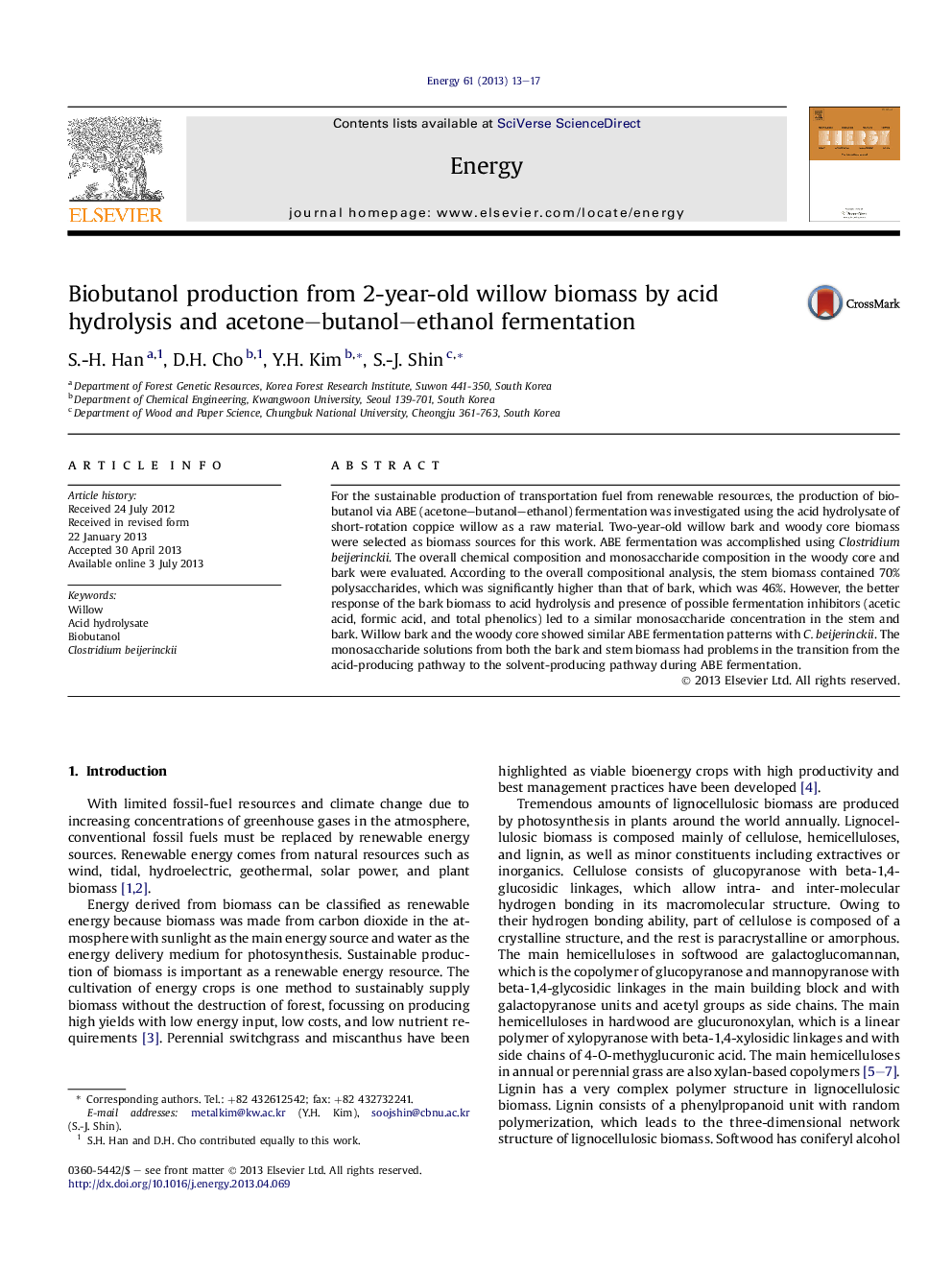| Article ID | Journal | Published Year | Pages | File Type |
|---|---|---|---|---|
| 8079034 | Energy | 2013 | 5 Pages |
Abstract
For the sustainable production of transportation fuel from renewable resources, the production of biobutanol via ABE (acetone-butanol-ethanol) fermentation was investigated using the acid hydrolysate of short-rotation coppice willow as a raw material. Two-year-old willow bark and woody core biomass were selected as biomass sources for this work. ABE fermentation was accomplished using Clostridium beijerinckii. The overall chemical composition and monosaccharide composition in the woody core and bark were evaluated. According to the overall compositional analysis, the stem biomass contained 70% polysaccharides, which was significantly higher than that of bark, which was 46%. However, the better response of the bark biomass to acid hydrolysis and presence of possible fermentation inhibitors (acetic acid, formic acid, and total phenolics) led to a similar monosaccharide concentration in the stem and bark. Willow bark and the woody core showed similar ABE fermentation patterns with C. beijerinckii. The monosaccharide solutions from both the bark and stem biomass had problems in the transition from the acid-producing pathway to the solvent-producing pathway during ABE fermentation.
Related Topics
Physical Sciences and Engineering
Energy
Energy (General)
Authors
S.-H. Han, D.H. Cho, Y.H. Kim, S.-J. Shin,
